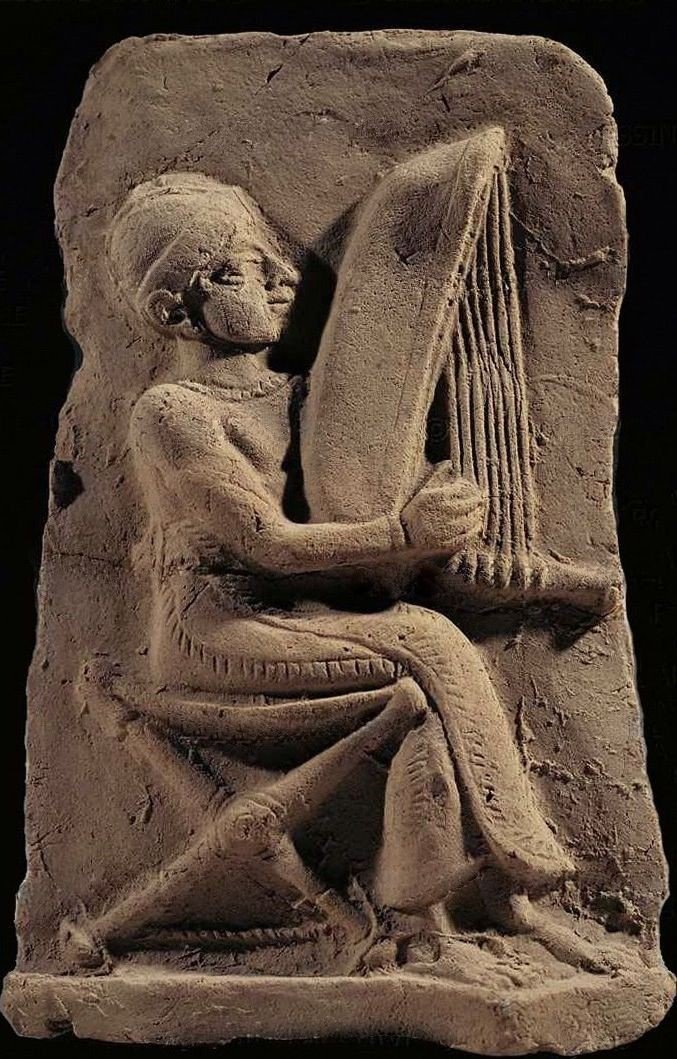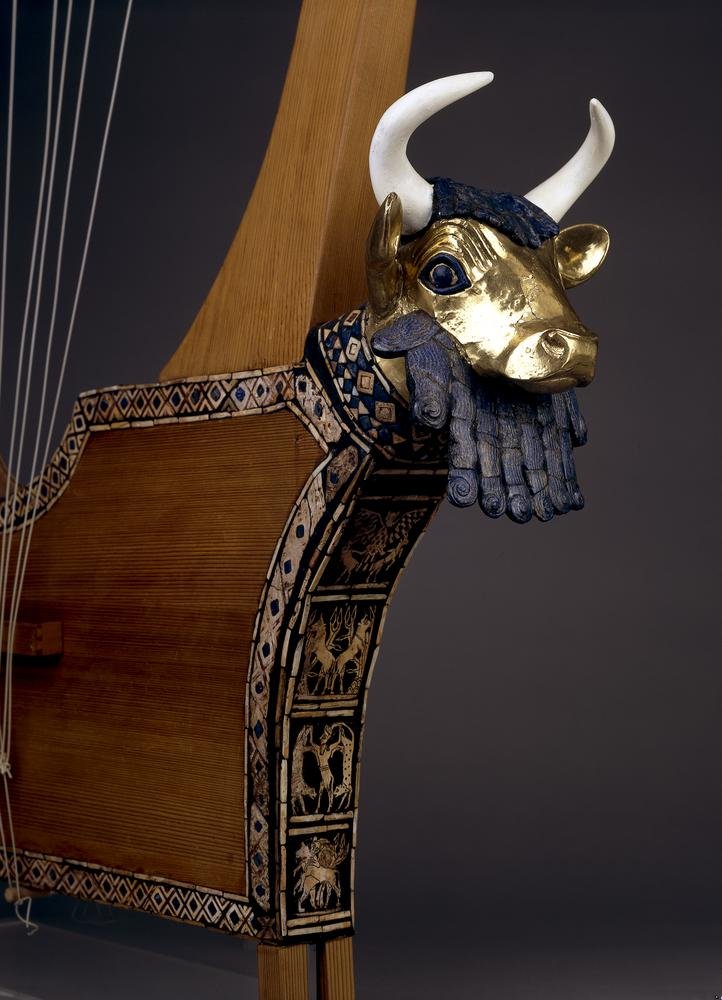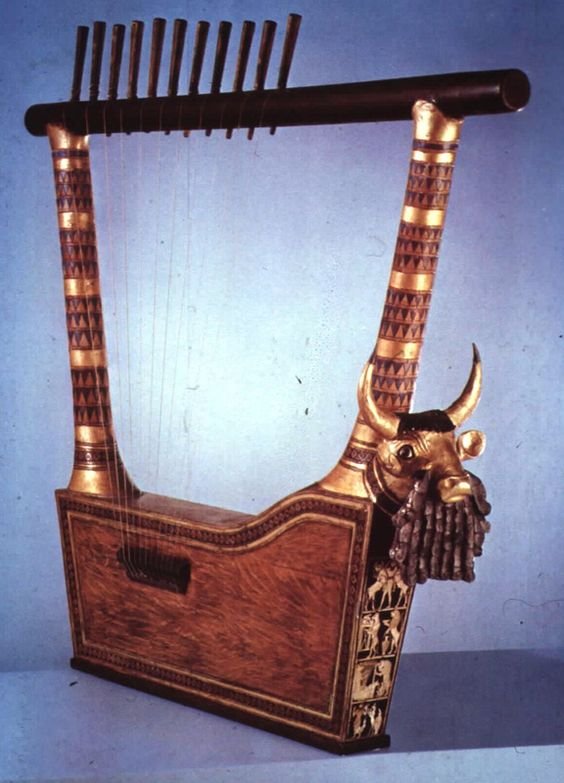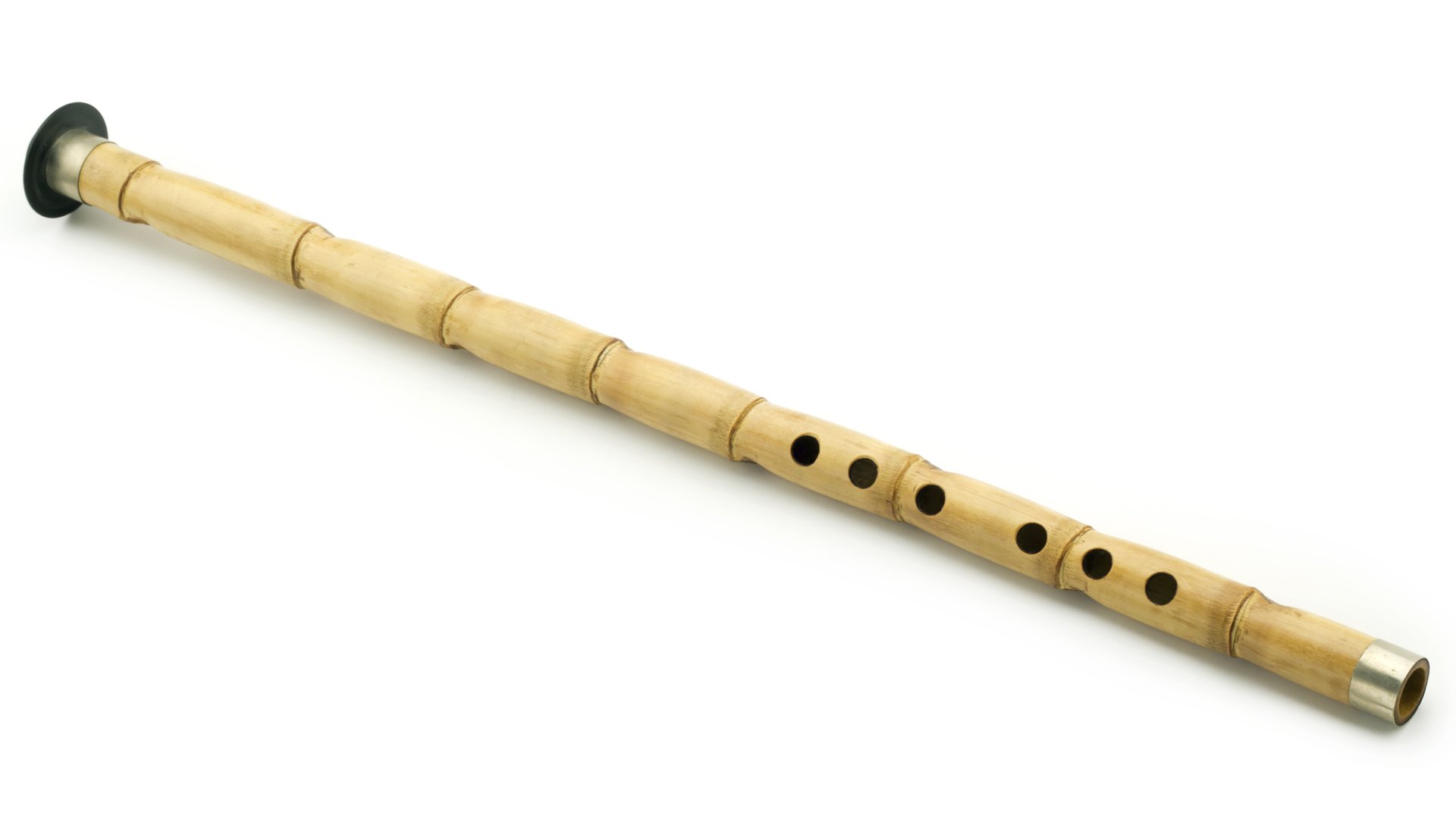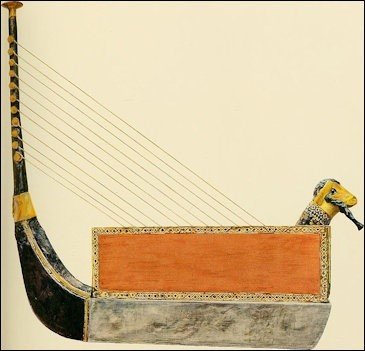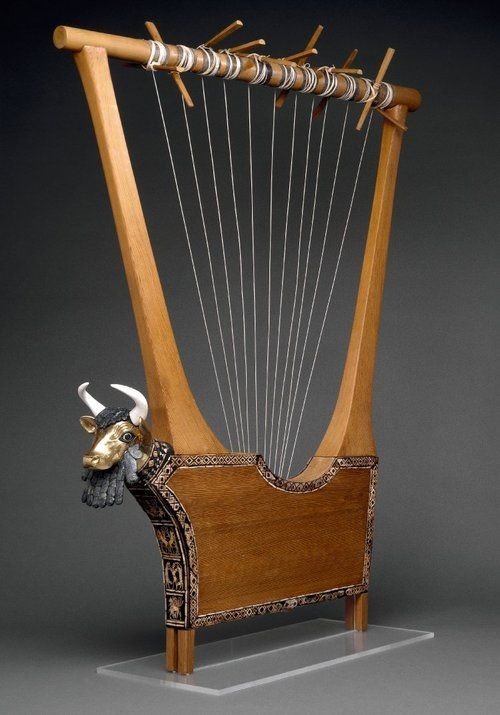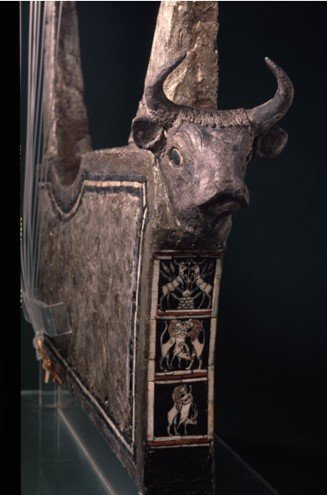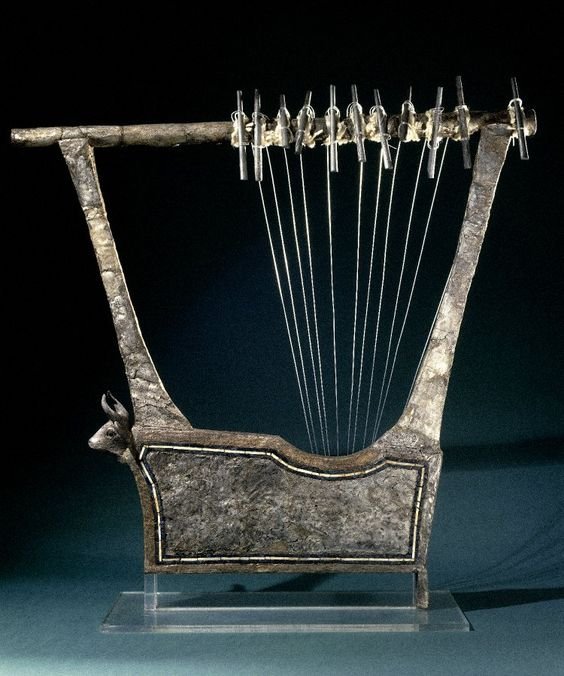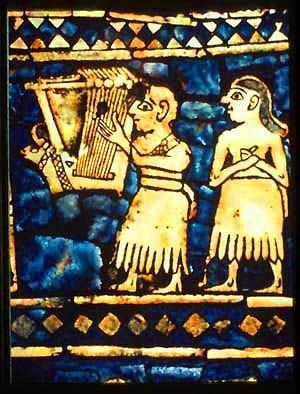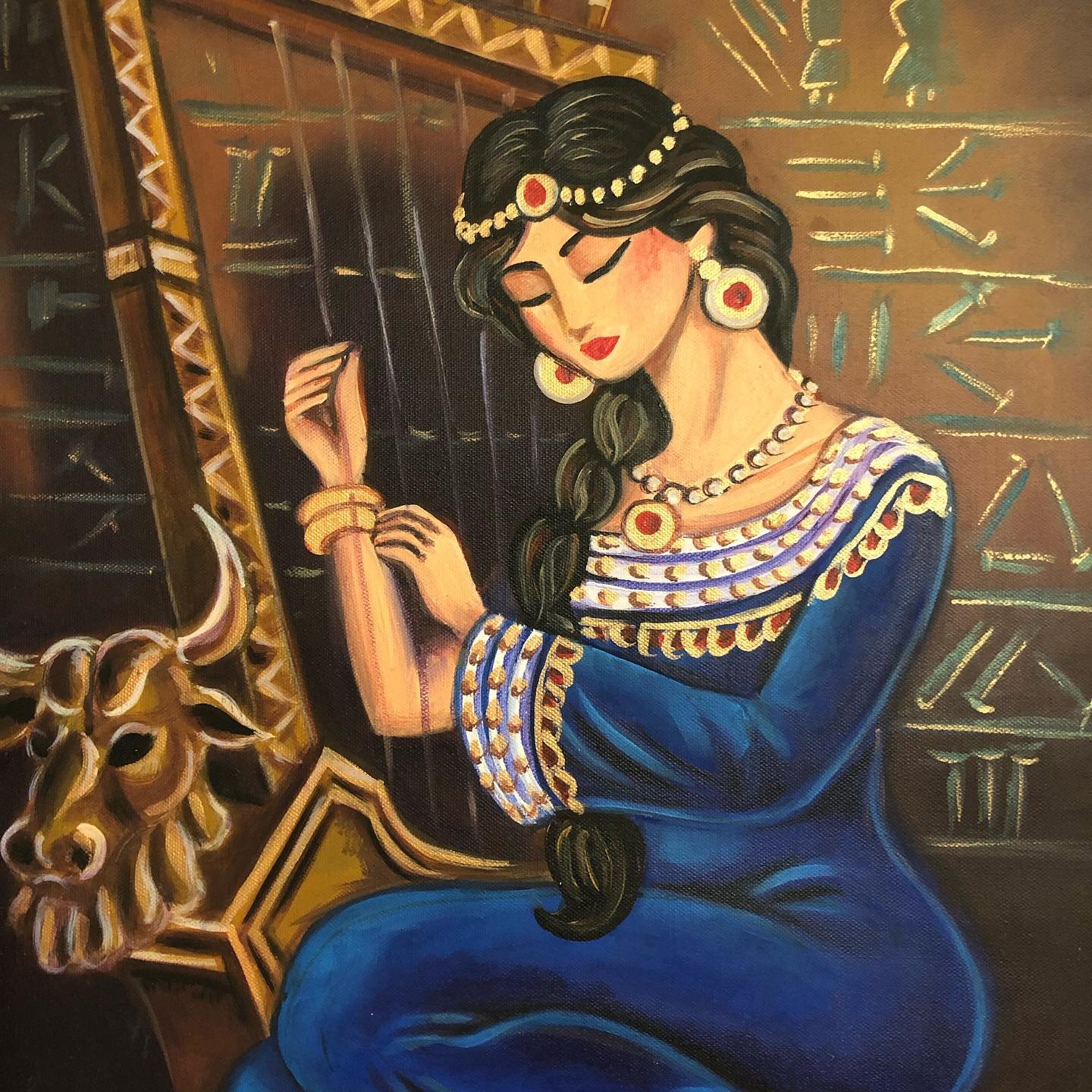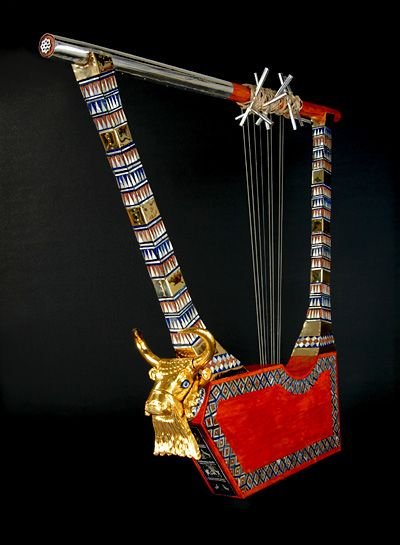Ancient Mesopotamian Music
By Adhid Miri, PhD
As the years pass, music has remained one of the most popular tools for communication between regions and cultures. Music is a connector between nations and generations, even when those who are communicating don’t speak the same language.
For Mesopotamians, music was an intrinsic part of the world around them, rather than a form of entertainment. Music enabled Mesopotamians to have a direct and intimate relationship with their pantheon of Gods, whose own celestial essence was believed to be musical. Evidence from the region, including artifacts, depictions, and written records, places Mesopotamia among the earliest well-documented cultures in the history of music.
We have a wealth of sources from which to extrapolate that theory: archeological, iconographical, and, most significantly, textual. Hundreds of thousands of cuneiform tablets in collections around the world shed light on the everyday life, economy, law, literature, religion, and music of ancient Mesopotamia. These sources give us the opportunity to imagine how the past might have sounded.
Early Musical Instruments
Although Sumerian and Babylonian art mainly depicts ceremonial instruments, historians have been able to distinguish within Mesopotamian artifacts evidence of six idiophones, or instruments that cause sound when they vibrate: concussion clubs, clappers, rattles, bells, cymbals, and sistra (Egyptian rattle).
Although they had percussion instruments, the people of Mesopotamia preferred stringed instruments to any other, at least as evidenced by their proliferation in Mesopotamian figurines, plaques, and seals. Countless varieties of harps are depicted, as well as lyres and lutes, the forerunners of modern stringed instruments such as the violin.
Before 2700 BC, musical instruments used by the Egyptian culture bore striking similarity to those of Mesopotamia, leading historians to conclude that the civilizations must have been in contact with one another. But by 2700 BC the cultural contacts seem to have dissipated; the lyre, a prominent ceremonial instrument invented by the Sumerians around 3200 BC, did not appear in Egypt for another 800 years.
Bovine Lyre
The bovine lyre was the most common stringed instrument in the Near East of the mid-3rd millennium BC. It earned its name because the soundbox is usually in the shape of a reclining or standing bovine. (Bull or bearded bison.) Other bovine lyre bodies are more schematic: the actual soundbox has a trapezoidal or rectangular shape, with a realistic bovine head appended to the front.
Lyres with gold bulls head have been excavated from the Royal Cemetery in Ur; one was found in the famous grave of Lady Puabi.
The bovine lyre was represented in graves with instruments ranging in size from hand-held lyres to the well-known instrument with the lapis lazulibearded bull’s head, the largest of the lyres recovered. The lyres of Ur, excavated in ancient Mesopotamia (modern Iraq), date to 2500 BC and are considered to be the world’s oldest surviving stringed instruments.
Silver Flute
One of the oldest musical instruments ever found in Mesopotamia was a silver flute which now belongs to the collection of the University of Pennsylvania’s Museum of Archeology and Anthropology. The silver-bodied flute with a gold mouthpiece is dated somewhere between 2650 and 2550 BCE. Flutes were common musical instruments in Mesopotamia and were usually made from naturally growing reeds in the marshes area of southern Iraq.
This ancient flute anticipated the construction of the modern flute. The Mesopotamian flute is constructed on a 35-centimeter long and 0.6-centimeter-wide silver body with seven finger holes and a gold curved mouthpiece. The modern flute is double the length with seven finger holes.
Although this flute is not the oldest musical instrument in the world, it provides commentary on the advancement of Mesopotamian civilization, as the presence of music represents the progress of societal development.
Music and Religion
Early Mesopotamian beliefs emanated from an acceptance of the prehistoric links between music and the voices of spirit-animals. Much of the art of the day reflects this in pictures, showing animals playing musical instruments and priests and nobility wearing animal parts, mimicking through dress and voice the spirit-animals.
Eventually, the spirit-animals’ voices became associated with those of the Gods who were worshipped, served, and obeyed in requisite devotion by humans.
The Gods, in fact, were differentiated in terms of their voices. Ea (or Enki), the God of the deep sea, was associated with the drum, the sound of which personified his essence. Ramman, who commanded the thunder and the winds, was the “spirit of sonorous voice.” The Goddess Ishtar was known as “the soft reedpipe.”
Music as a Tool
Going back to ancient Sumer, music defined the metaphysical boundaries for ancient people of a world they could neither see nor, at times, understand. To understand the role of musical theory in modeling the cosmos, one must realize that it involves the definition of intervals, the distance between pitches, by ratios of integers or counting numbers. For the ancient Sumerians, music was a tool that helped them describe the cosmos.
The development of city-states during Sumerian times produced a vibrant atmosphere for sound. The human experience, once past the city walls, entered a world that was surrounded in noise. The persistent activities important to daily life included immense music. The streets, dwellings, and businesses of Sumerian civilizations were filled with songs.
The ancient Babylonians continued the Sumerian tradition of music and added to it an instrument much like a piano. The ancient Assyrians were not interested in music unless it was war related. They liked drums and horns and anything that made loud, scary noises.
Musicians
Musicians in Mesopotamia were well-trained and were a recognized professional class.
How they sang depended on what they were singing. Whereas the religious singers were supposed to sing harshly, ignoring beauty to emphasize and focus on the religious chants, the social singers were expected to sing beautiful melodies.
The expressive power of the singing of ancient Mesopotamian musicians is demonstrated in the Sumerian proverb: “A scribe without a hand is a singer without a throat.” Singers can sometimes be identified in iconographic representations because they stand next to instrumentalists and hold their hands against their chest or stomach to enable diaphragmatic breathing while singing—a technique employed by vocalists to this day.
The “Nar” was a practitioner of music, typically an individual that sang for the temple. There is an association recognized between the scribe and the Nar. Another Sumerian Proverb states, “the art of the scribe and that of the singer appear as two different professions, yet linked together, presumably as two levels of the same education.”
Musical Rituals and Spirituality
Through the centuries many forms of music have arisen out of mystical or spiritual ardor. There are many types of music, songs, rituals, and beautiful chants for each deity at religious occasions we call “worship” which connect a person with their God.
Mesopotamian temple rituals derived from the Neolithic ceremonies that were held at megaliths associated with celestial movements. The monumental temples of the Sumerians were images of the cosmos. Inner connections between divine house and divine service, and hence between temple and music, were here expressed.
Every city had a temple with its most important citizen as the precentor who knew the intricacies of communicating with the Gods. Each chant had a special quality that “fitted it for communion with a chosen deity or caused it to have a definite magical effect.”
With these spiritual prescriptions, Mesopotamia offered the world its first mythology and recorded religion. Active trading by Mesopotamians spread its influence. In fact, its mythology was seminal in producing the wellspring of stories embraced by other cultures through the millennia, including the story of creation, the fall of man, the Great Flood, the tree of life and the god figure who dies and is resurrected.
Of course, the big question is: What did this music sound like? We have no recordings of ancient Mesopotamian music, and therefore this music – as originally performed – will remain silent forever. Nevertheless, the wealth and diversity of the available sources does enable us to reconstruct many aspects of the music of ancient Mesopotamia.
Playable reconstructions of several of the Ur instruments, using coniferous wood, produce rich sounds. The largest lyre, having the longest strings, has a register and resonance like that of a bass viol; the medium-sized silver lyre has a sound reminiscent of a cello; Puabi’s harp sounds rather like a small guitar.
We can never know exactly how ancient Mesopotamian instrumentalists and singers performed. We will surely learn more about the construction of ancient instruments and sounds as new materials are excavated or as we improve our understanding of known texts and artifacts.
Music undoubtedly will continue to be the common voice of mankind, irrespective of national boundaries. Music belongs to everyone, regardless of race, creed, age, or status in life. The magic of music remains a secret; however, thanks to the Mesopotamians, it is this magic that we will continue to enjoy for years and years to come.
Sources include articles by Anna Draffkorn Kilmer, Uri Gabbay, and Julianne Goodman, Wikipedia, and “Music in Ancient Mesopotamia and Egypt” by Marcelle Duchesne Guillemin. Special editing by Jacqueline Raxter.

